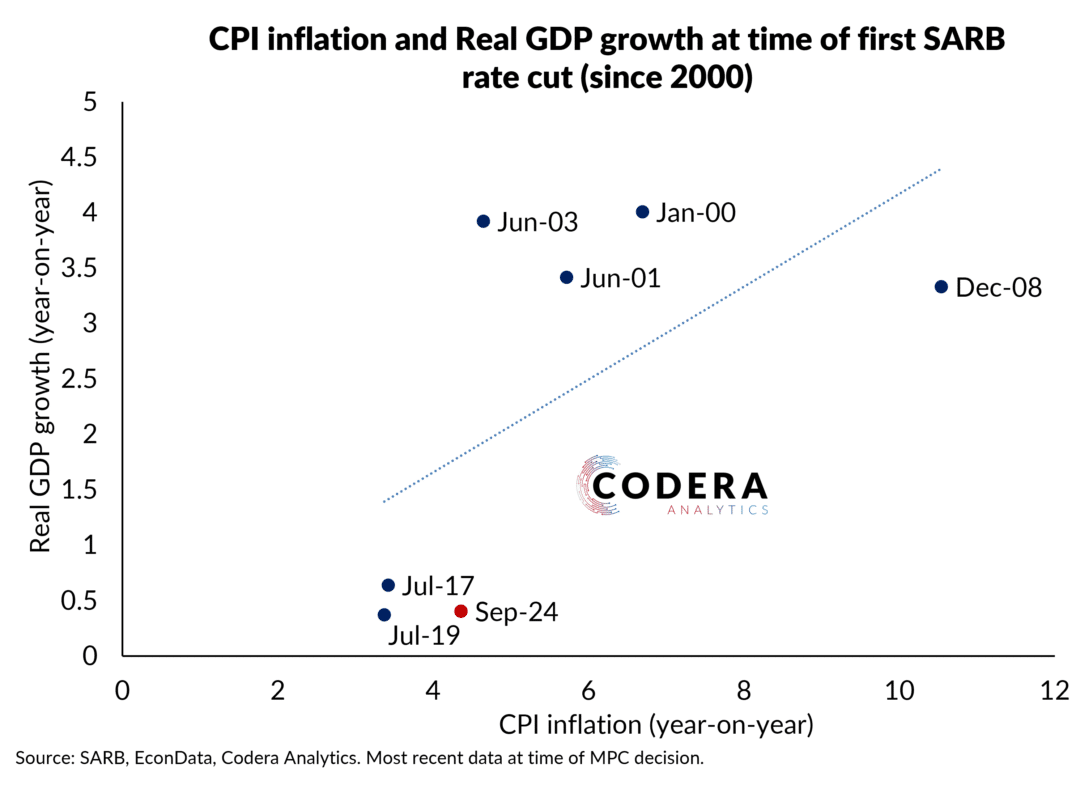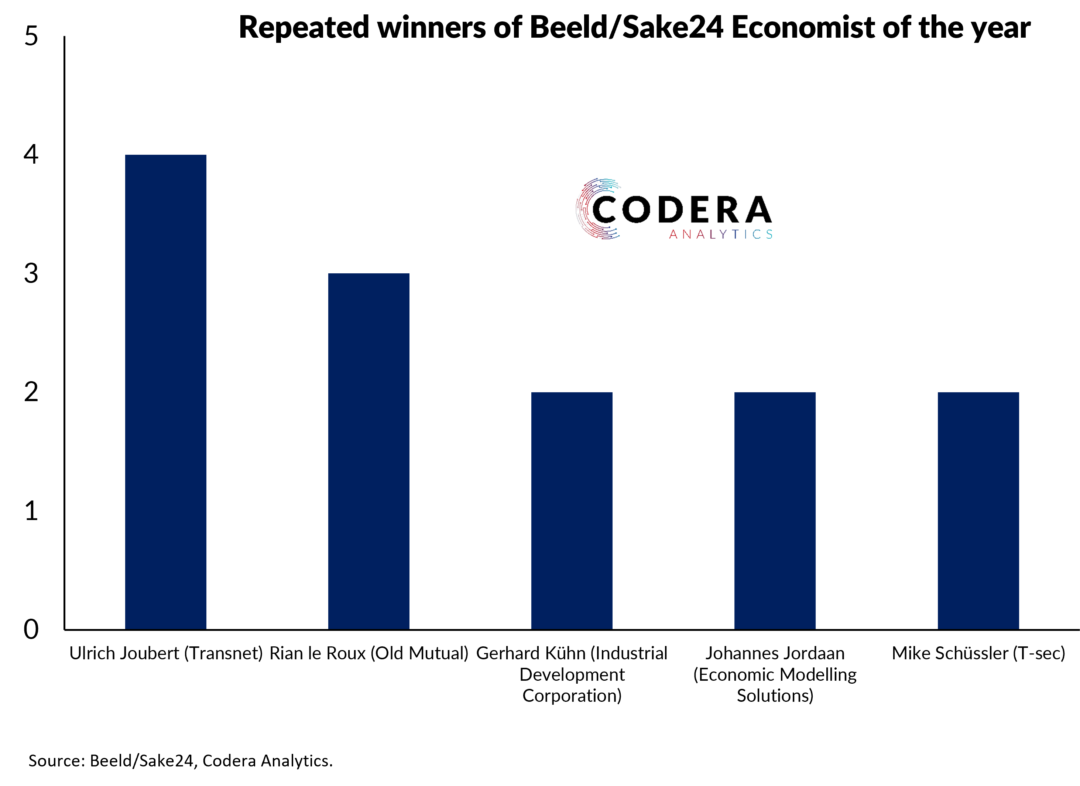Since the South African Reserve Bank (SARB) began publishing projections, their GDP projections have been less accurate than those of the International Monetary Fund (IMF) for the current projection year, but marginally more accurate than National Treasury’s (NT) for the current year.

All three agencies over-estimated long-term real GDP growth over this period (see here and here for a comparison for the SARB and IMF and here for NT). However, upward revision to the level of South Africa’s GDP have reduced the size of these forecast errors on average. There were also large base year effects from the COVID-19 pandemic for SARB and NT that created offsetting current year (one-year ahead) forecast errors in 2020-2021 (2019-2020) from the unexpected fall in 2020’s growth rate.
It is worth noting that the SARB and IMF would generally have had a slight informational advantage over the NT, as their projections generally would have been published after the previous year’s GDP data have been released. By the time of the April 2020 IMF projection, for example, the IMF’s 2020 projection had been marked down dramatically compared to the NT and SARB.


Footnote
To give a different summary that gives a sense of directional accuracy, the chart below does not use absolute forecast errors. The SARB and NT’s one-year ahead projections have, on the other hand, been the marginally more accurate than the IMF’s since 2016. However, this reflects the IMF’s large 2019 one-year ahead forecast error (see second chart above).


